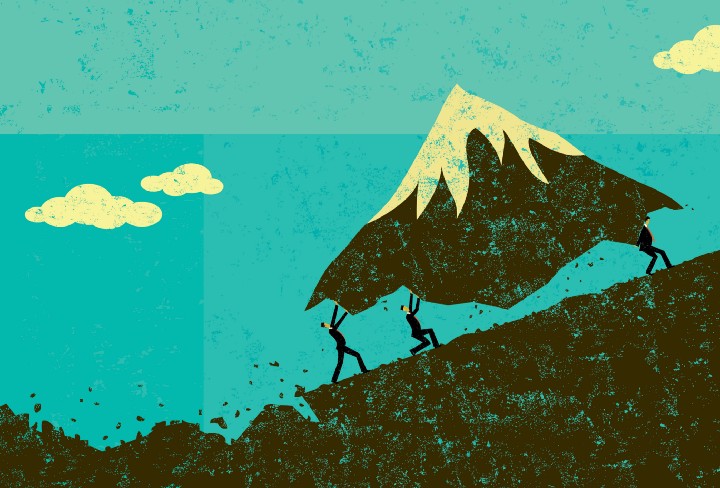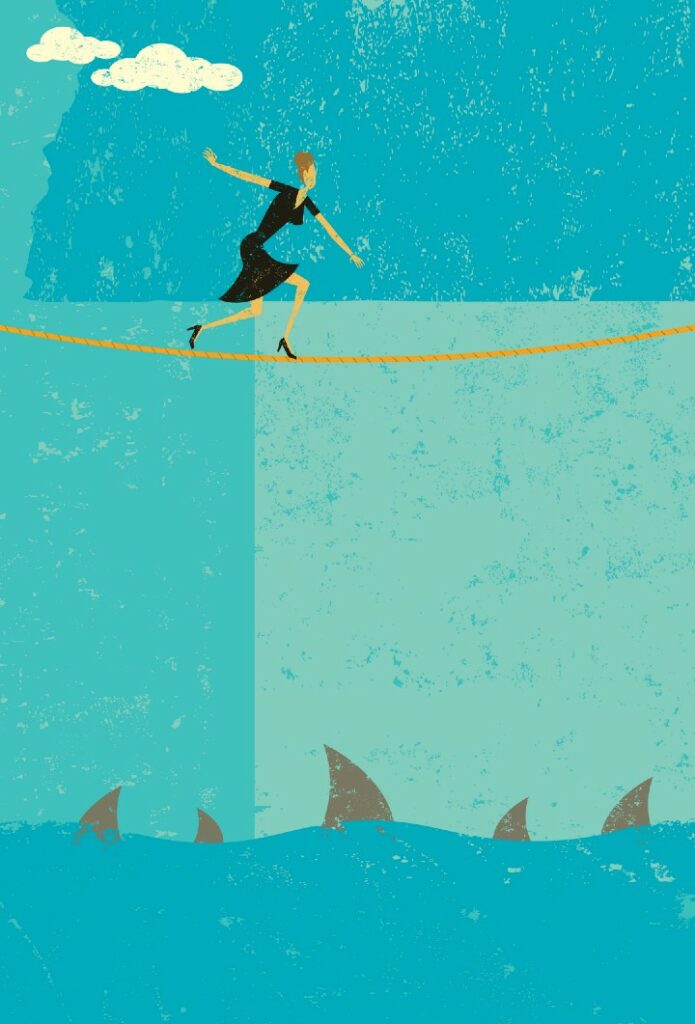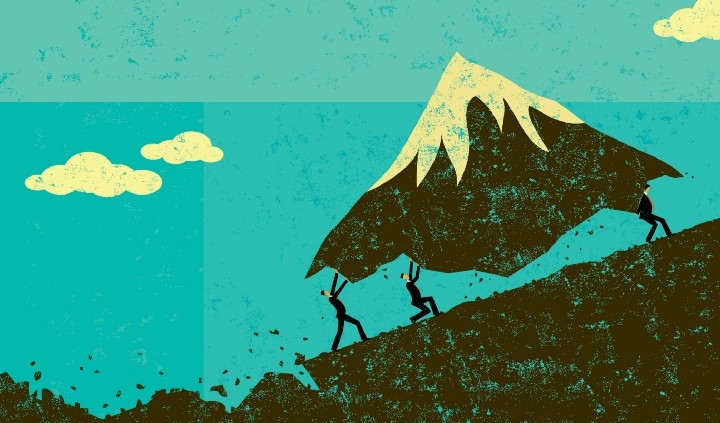Staying Alive Post Pandemic

Welcome to Spencer Trask Perspectives, a monthly interview series with our CEO Bill Clifford and writer John Essick. In each installment, Mr. Clifford shares his unique insights and expert opinions on topics such as business development, deal flow, C-suite management, startup culture, entrepreneurialism, and more.
We welcome your feedback, and encourage you to submit questions to [email protected] for Mr. Clifford to answer in future articles.
The past few months have been filled with stories of small businesses struggling to survive, or even worse, shutting down completely. However, many businesses have been able to quickly adapt or pivot their operations to not just stay in business, but to thrive.
For example, restaurants have migrated from serving seated customers to offering curbside pickup or meal deliveries. Retail businesses have turned to technology to engage customers through digital outreach. Although these businesses may have had to slash jobs, they are still essentially providing the same goods or services as they were before COVID. Others, however, have completely changed their business; distilleries that once produced alcohol now make hand sanitizers, and clothing companies that once manufactured clothing items now produce masks and other PPE items.
In the short term, these businesses should be commended for both their ability to pivot and keep the doors open and workers employed, as well as their contributions to keeping people healthy. In the long term, it remains to be seen if, in fact, they have set themselves up for a fall when, and it will happen, life gets back to something resembling “normal.”
I spoke with Spencer Trask CEO, Bill Clifford for his thoughts on what factors must exist for these small businesses to successfully “re-pivot” to survive a Post-COVID-19 marketplace.
John Essick: Many businesses survived COVID-19 by pivoting quickly to meet new market demands. Do you think they will be able to re-pivot as quickly back to doing what they did before the pandemic and regain old markets?
Bill Clifford: The answer to that question depends on two factors: 1.) When this pandemic ends and the company attempts to re-pivot, will the market that they attempt to re-pivot to still exist? There is no guarantee that old markets will still exist or ‘re-emerge’ in the world of the ‘new normal’; and 2.) Will the workforce that existed in the old world still exist, allowing a rapid re-pivot? Many companies had to furlough, layoff, fire or otherwise release many of the skilled and trained workers that were part of their prior success. There is no guarantee that those same workers are still available for rehire in the new normal world.
It is doubtful that the end of the pandemic means a return to an economic climate that was an exact replica of the way things were pre-pandemic. We have likely seen a permanent change in the way we do business across many, if not most marketplaces — especially hospitality, retail, restaurants and even automobile sales and service. Companies that have survived by quickly pivoting to new or adjacent markets for survival are to be commended for their survival skills and for keeping some portion of the working population employed during these difficult times. Assuming that they pivoted into a market that was unique to the COVID-19 pandemic, and therefore not a sustainable market long term, they must now either try to return to their roots in their old marketplace or pivot once again to a new marketplace that is sustainable. As I said above, there is no guarantee that their old marketplace is sitting there waiting for their reentry — they have proven once that they can quickly pivot successfully. The end of the pandemic may force them to prove that they need to do it all over again!

JE: How can small businesses re-pivot without losing balance? In other words, what will it take for a business to confidently be able to say, “This is who we are”?
BC: The most important thing that a small business can do to survive in these periods where they may have to change their business focus to react to changes in the market caused by COVID-19, is to keep in mind their core competencies and not try to be something that they are not. If they are the world’s best shirt maker, do not suddenly attempt to become a maker of women’s dresses! Although they sound like similar skills, the competencies are far different, and you will get your clock cleaned by companies with decades of experience and loyal customer bases. Venturing into new markets outside your core competencies can spell disaster and quickly upset the delicate balance of a small company. Small companies that drew upon their core competencies and pivoted away from their primary market to a market better served during the COVID-19 pandemic should be praised for their flexibility, adaptability, and survival instincts. Their strategic challenge will come when the pandemic subsidies and they are faced with the decision to either remain in the ‘pandemic-enabled’ market or re-pivot back to their original market, if it still exists in some viable fashion.
As I have suggested, there are no guarantees that the new normal means that the markets that once existed will once again re-emerge in the new normal world. The business models that once thrived in the old normal, such as high-end, direct-to-consumer luxury sales such as Away, Boll and Branch, etc. may not find the same, receptive markets post-COVID. Consumer buying patterns shifted during the pandemic and some of those shifts will become permanent buying patterns.
Just as employees became comfortable working at home, more and more shoppers became comfortable shopping from home even for the most basic items like groceries and pharmaceuticals. The end of the pandemic does not mean the end of those newly ingrained buying habits. The online shopping phenomenon that began 20+ years ago with the advent of the internet was met with a tsunami when the pandemic hit, and there is no turning back the clock.
JE: Do you think businesses, like the distilleries that now produce hand sanitizers or clothing manufacturers making PPE, keep these operations functioning even as they return to doing what they did before COVID-19, or should they shut them down and focus on their roots?
BC: Based on what the government stockpiles looked like when we entered this pandemic, hand sanitizers and PPE manufacturers were working overnight just to get us up to a minimum level of supply. Now that we’ve reached that level, I suspect that the hand sanitizer business will remain robust well into the future as all Americans have become heightened in their awareness of the risks, not only of the COVID-19 virus, but of all airborne viruses. I believe that we have become a society that will now live with hand sanitizer as a part of our culture for many years to come! As for PPEs, I also believe that they will become standard fare, not only in hospitals but in doctors and dental offices around the country, so a steady stream of PPE is also warranted.
There is no way to predict which trends or markets will still exist after COVID-19 subsides. The best thing any business can do right now — whether it be a startup or global industry leader — is to keep on their toes, stay flexible, do their due diligence, and stay tuned into current affairs. There is no one answer for every business out there; founders and business owners need to be plugged into their own data and trends more than ever. What worked for the pizza restaurant down the road, may have put the deli next door out of business. Ask your sales team what customers have been saying, meet with the marketing team to see which campaigns have been converting the most sales, and remember to listen to your loyal customers, clients, and your own employees!
JE: Going forward, should businesses consider eschewing the concept of global supply chains and plan to source locally to avoid disruptions in supply chains?
BC: I wrote at length about the risks of global supply chains in a previous Spencer Trask Perspectives article (read: “Thanks to COVID-19, the Startup World Has Changed Forever”). For many reasons, not the least of which, is the inherent risk in the unreliability of international partners to fulfill contractual commitments and quality control issues. I would recommend that businesses begin to source US-based supply chains to avoid both disruptions in delivery and potential quality control problems in the future.
JE: Do you think companies that pivoted away from pre-COVID operations hurt themselves in the eyes of investors or will their ability to adapt be considered a positive?
BC: Companies that pivoted away from pre-COVID operations to survive and then survived, helped themselves in the eyes of investors. Their willingness to adapt and survive is a positive attribute. The trick will be to pivot to an on-going enterprise once the pandemic is over. As stated above, there is no guarantee that their original marketplace will be waiting for them once the pandemic has passed. They must reassess the market and determine if what remains of that market is sufficient to rebuild their business, or if they must retool their product line to address new or adjacent market to sustain their business.

JE: Is there one once-accepted fact about how to model or run a business that you think will no longer apply in the new normal?
BC: Old normal or new normal — I believe that the concept of the hierarchical organizational chart, with multiple levels of reporting structures and fancy titles at all levels in between — has become an anachronism! Today’s organization is more an association of rapidly assembled teams with a team leader built around skillsets with clearly defined deliverables, supplemented by outside experts, where needed. The CEO provides the vision statement and guides the direction — more in a messianic fashion — and holds teams accountable for deliverables and dates. Team members can participate on multiple teams as their skill sets require.
I also believe that mandatory attendance in an office environment will become obsolete. We all have had to make adjustments on how we interact with others due to COVID, but we have also had to learn to listen and respect the comfort level of others. Having an employee refuse to come into the office due to flu season was almost unheard of, unless they had an immune-compromising disorder. Now, we need to listen to employees and respect their decisions as a matter of health and hygiene. What works for one family, may not work for another, and so on.
JE: How do you see small businesses reimagining a workforce that will have some people who may prefer remote, and others who work better within a group environment?
BC: There are plenty of ways to satisfy both the remote employee and the person who likes the group-think environment with today’s technology. Since the pandemic, the remote employee has had to perform almost all of their tasks from their home office with little interaction, as has been their preference. The employee who needed group interaction has had to rely on Zoom or other video conferencing tools for a group meeting. Rarely were they able to gather in person for face-to-face meetings. As the pandemic eases, companies will find that some employees are much more productive working remotely and may ask/choose to remain remote employees post-COVID-19. Companies may find that their productivity is actually greater working remotely and encourage the remote working relationship. Others may welcome the day when a return to the office is encouraged and their productivity increases greatly when they are back amongst other employees.
JE: The latest U.S. Census calculates that certain high-tech regions of the country, such as Silicon Valley, have the highest housing and office space costs in the U.S. Now, with the wider acceptance of both remote workforces and digital purchasing, do you see the traditional concept of business sectors like Silicon Valley fading away, and should small businesses consider setting up shop in less expensive regions of the country to keep operating costs lower?
BC: Regardless of the high cost of office space and housing, I do not see a dramatic shift in the location of small businesses and high-tech startups away from Silicon Valley. We may see a reduction in the total amount of office space taken, but startups need to be where the action is — where the hiring is and where the Venture Capital action is — and that is in Silicon Valley, so don’t look for a major shift in the real estate market. The VCs like to drive down the street from Palo Alto to visit their clients. New hires like to drive to One Infinity Loop to interview with Apple. Techies like to stay close to home. Startups will likely want to stay close to the action in Silicon Valley for a long time to come.
For more tips and advice, follow our Spencer Trask Perspectives series on Medium, and follow us on LinkedIn. You can learn more about Spencer Trask by visiting migrate-onedaybuilds740.e.wpstage.net/.
About Bill Clifford
Bill Clifford is Chief Executive Officer of Spencer Trask & Co., a privately owned advanced technology incubation firm. Prior to joining Spencer Trask & Co., Mr. Clifford served as Chairman of the Board and Chief Executive Officer at Aperture Technologies Inc., General Partner of The Fields Group, and General Partner of New Vista Capital. He is also the former President and Chief Executive Officer of Gartner Group, the world’s leading authority on the information technology industry, user and vendor technology strategies and market research. During his tenure at Gartner, annual revenues increased from $175 million in fiscal 1993 to $780 million in fiscal 1999.
Mr. Clifford currently serves on the board of directors of Cybersettle, Inc. He has been featured in CEO Magazine, Leaders Magazine and Forbes, and is a keynote speaker and panelist at numerous Technology Industry conferences.



